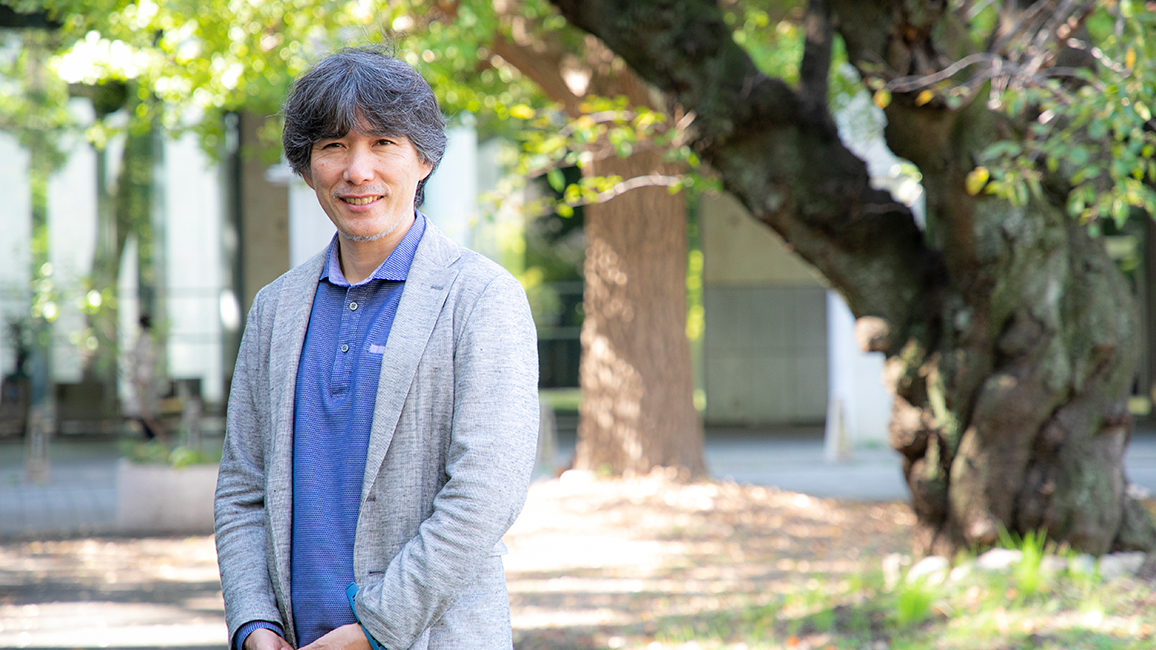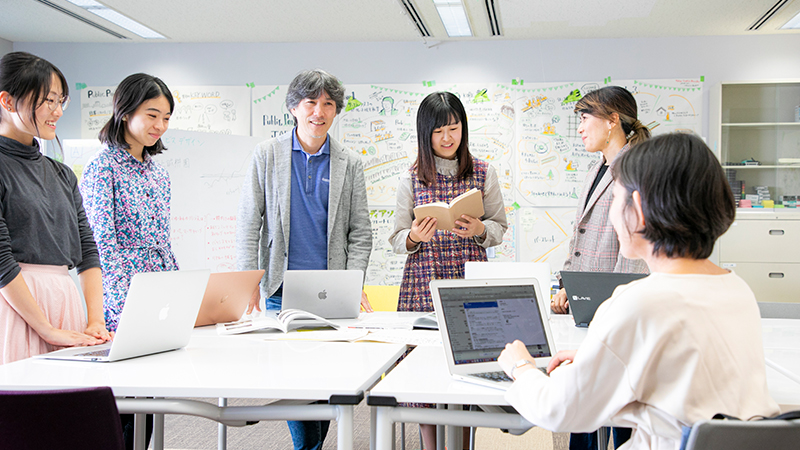- HOME
- Research at RCAST
- Visit to Laboratories
- Koizumi Laboratory
Koizumi Laboratory

The Key to Sustainable Societies in Japan:
Regional Revitalization through Next-Generation Urban Development
The Co-Creative Community Planning, Design, and Management Koizumi Laboratory is working on putting community rebuilding and revitalization into practice, and coupling it with feedback on research to answer the question, “How can Japan revitalize its towns and communities, where the population is progressively aging?” In addition to urban development, in which local governments and corporations collaborate to plan, design and manage communities, the lab is also conducting advanced research activities that are possible only at RCAST at its Co-Creation Living Lab. Its aim is to construct theories on urban development that are backed by practical approaches.
Continuous cycle of constructing theories and verifying them in practice
Putting theoretically-constructed plans into practice to verify them; this is the basic stance of our Lab. The key to ensuring that research on community rebuilding and revitalization and urban development keeps advancing is to continually verify the research through its practical application.
Research on community development in Japan from here on will be premised on the country’s aging society. The range of problems caused by an aging population is multifaceted, and they are already seriously impacting every community in Japan. So if we don’t address these issues, they will likely cause substantial damage to the country’s social security system and economy.
So we are working on the Next-Generation Suburban Development (WISE City) project for community revitalization to cope with and mitigate aging society issues. This project proposes a new concept of “community living”, and tackles the rebuilding and revitalization of communities using placemaking methods. Our goal is to take the fundamental theories on the planning, design and management of communities and apply them to actual community revitalization projects. At the same time, we are looking to derive new knowledge and findings through the practical application of these theories, and use them to build a model that can be applied to community rebuilding and revitalization in other regions.
RCAST has also launched the Co-Creation Living Lab as a project for the planning, design, and management of communities. The Lab is focused on proposing mechanisms with multi-sector participation and methods for co-creation to address the increasingly complex and individualized issues in communities, and develop them into sustainable societies. A distinct merit of RCAST is that it harnesses the skills and knowledge of promising and enthusiastic researchers from a diversity of academic backgrounds whether it be the humanities or science, and it has an open environment where researchers can freely work on new issues.
Searching for a new way forward for “publicness”
My favorite subjects at high school were mathematics and physics, although I was somehow drawn to philosophy during the year I spent preparing to take the university entrance exam again; that period in my life has certainly played a part in where I am today. I went on to study architecture, which seems to have many connections with social issues even among the other sciences, and this gave me the opportunity to meet and learn from urban engineering professors. These experiences have no doubt had an influence on selecting urban planning and community development as the themes of my research.
I’ve always been interested in “publicness” when it comes to communities, which are shared spaces for a variety of people rather than a place for individuals. Communities comprise a multitude of stakeholders, including of course a diversity of citizens as well as companies and administrative agencies.
So how do these stakeholders, who have differing values and are in diverse environments, collaborate with each other to carry out urban development and plan, design, and manage communities in a single place? There is only one physical space to do this; and yet, the people gathered in this single place are actually quite varied. It is within there that we are seeking to create a space to secure this “communality.”
Even in the project we are currently working on, there are in fact a wide range of stakeholders involved. We are creating a new type of “publicness” from scratch in the specific space where we are now. This goes beyond just simple research; it is an exciting challenge that requires us to constantly be in tune with what is going on in the real world. The research theme we have chosen also gives us a real sense of doing something that is making a positive difference.
Enjoyable research, with an understanding of the arts
There is a general artistic aspect to community development and urban planning, which requires interdisciplinary and broad-based knowledge and findings; you need to know more than just what you’ve learnt studying architecture. There are some cases that call for knowledge of the social sciences and humanities such as philosophy, and occasionally even political science.
I’m committed to providing the right kind of support to facilitate such research. Ideally, the students who I’d be able to support best would have a research theme that is somewhat aligned with my areas of interests; this is so that I can provide them with the appropriate support, such as assistance with methodologies and my own expertise on research, as well as suggestions on related areas.
That said, I never do anything like assigning a research theme; each student has to come up with their own theme, and they won’t receive a Ph.D. without the producing the required results. Many of the students who graduate from this lab are now working as researchers. RCAST is fortunate to have a diverse range of researchers from a wide variety of disciplines, all of whom can also access environments such as the Co-Creation Living Lab to conduct their research. I believe RCAST truly has many merits for people who want to freely carry out research in an open environment.





